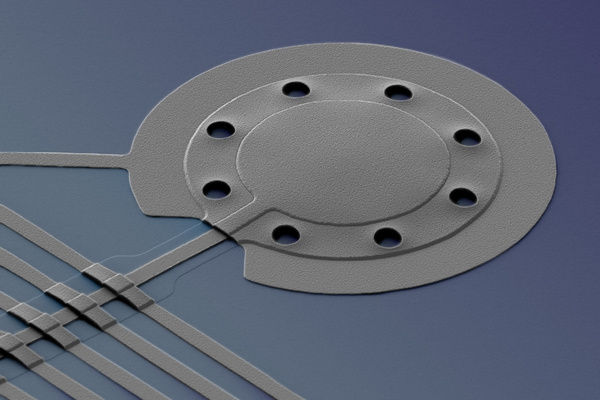|
physicists at the national institute of standards and technology (nist) in gathersburg, md. have made a potentially significant breakthrough by cooling a microscopic mechanical drum (a vibrating aluminum membrane) to less than one-fifth of a single quantum, which lower than the generally agreed upon quantum limit.

nist researchers applied a special form of microwave light to cool a microscopic aluminum drum to an energy
level below the generally accepted limit. (teufel/nist)
according to a report from nist, this development could lead to cooling objects to absolute zero, which is “the temperature at which matter is devoid of nearly all energy and motion.” the scientists insisted that this would make sensors more sensitive, information storage more efficient, and no distortion in quantum computing.
previously, nist scientists had cooled the drum, which is 20micrometers in diameter and 100 nanometers thick and embedded in a superconducting circuit designed to create an electromagnetic cavity, to its lowest energy ground state, one-third of a quantum, through sideband cooling.
they applied a microwave tone to the circuit at a frequency below the cavity’s resonance to drive electrical charge and make the drum beat. the drumbeats created photons that leaked out of the cavity and took with them one mechanical unit of energy (a phonon) from the motion.
this time, nist scientists used squeezed light to power the drum’s circuit.
according to the article, “squeezing is a quantum mechanical concept in which noise, or unwanted fluctuations, is moved from a useful property of the light to another aspect that doesn’t affect the experiment. these quantum fluctuations limit the lowest temperatures that can be reached with conventional cooling techniques. the nist team used a special circuit to generate microwave photons that were purified or stripped of intensity fluctuations, which reduced inadvertent heating of the drum.”
by squeezing the light in a specific direction and amount, the scientists created photon with more stable intensity. as one researcher described, “these photons are both fragile and powerful.”
the work was featured in the jan. 12 issue of nature. the abstract stated:
“quantum fluctuations of the electromagnetic vacuum produce measurable physical effects such as casimir forces and the lamb shift. they also impose an observable limit—known as the quantum backaction limit—on the lowest temperatures that can be reached using conventional laser cooling techniques. as laser cooling experiments continue to bring massive mechanical systems to unprecedentedly low temperatures, this seemingly fundamental limit is increasingly important in the laboratory.
“fortunately, vacuum fluctuations are not immutable and can be ‘squeezed’, reducing amplitude fluctuations at the expense of phase fluctuations. here we propose and experimentally demonstrate that squeezed light can be used to cool the motion of a macroscopic mechanical object below the quantum backaction limit.
“we first cool a microwave cavity optomechanical system using a coherent state of light to within 15 per cent of this limit. we then cool the system to more than two decibels below the quantum backaction limit using a squeezed microwave field generated by a josephson parametric amplifier. from heterodyne spectroscopy of the mechanical sidebands, we measure a minimum thermal occupancy of 0.19 ± 0.01 phonons.
“with our technique, even low-frequency mechanical oscillators can in principle be cooled arbitrarily close to the motional ground state, enabling the exploration of quantum physics in larger, more massive systems.”
|